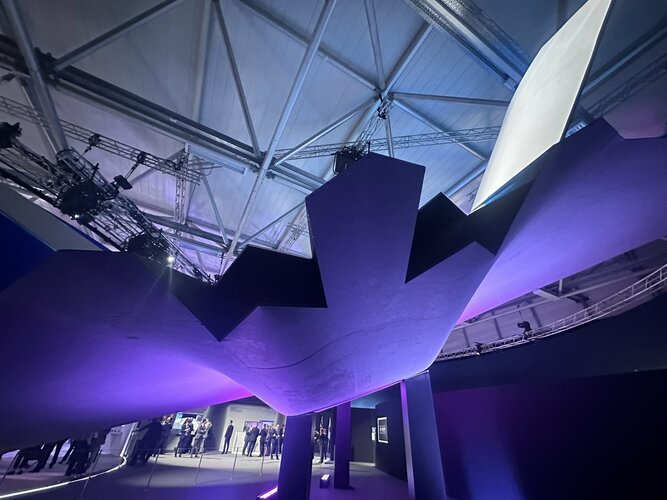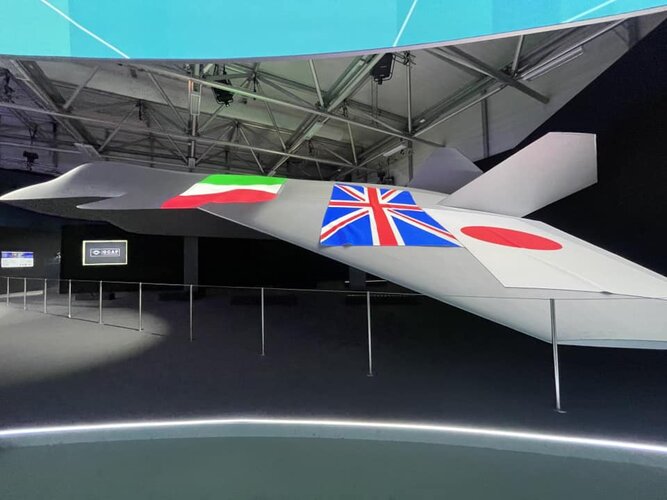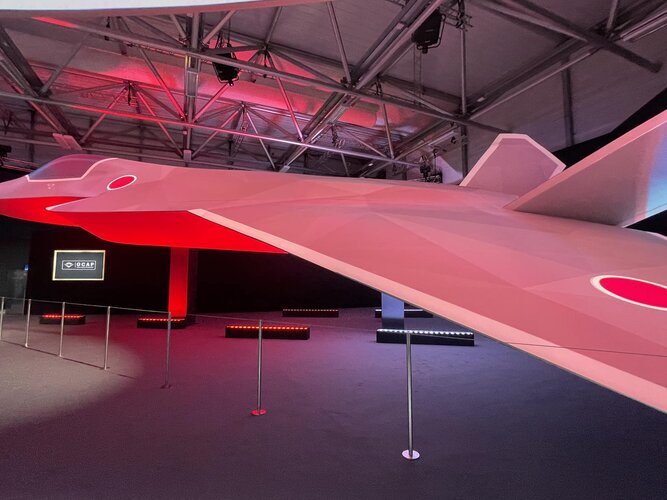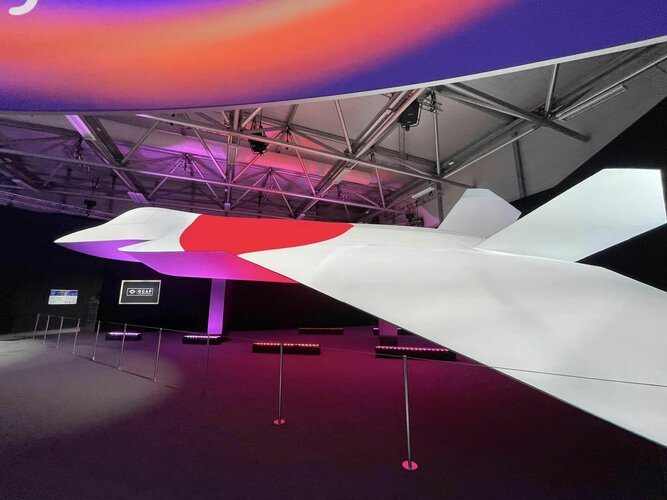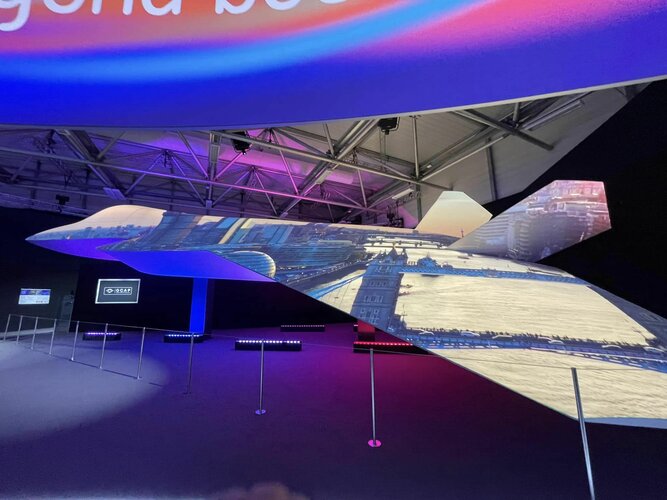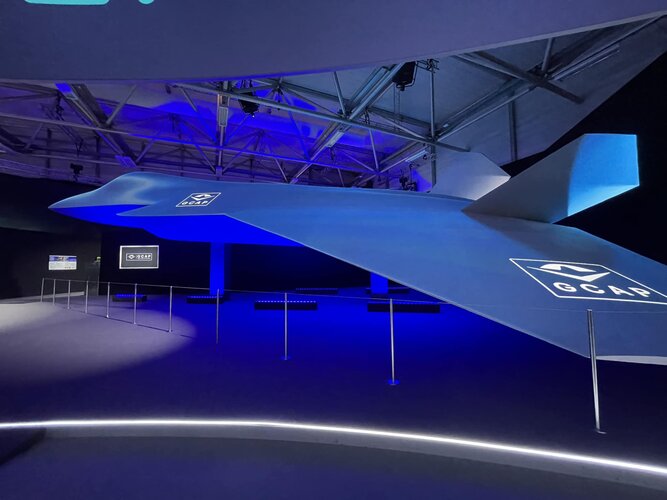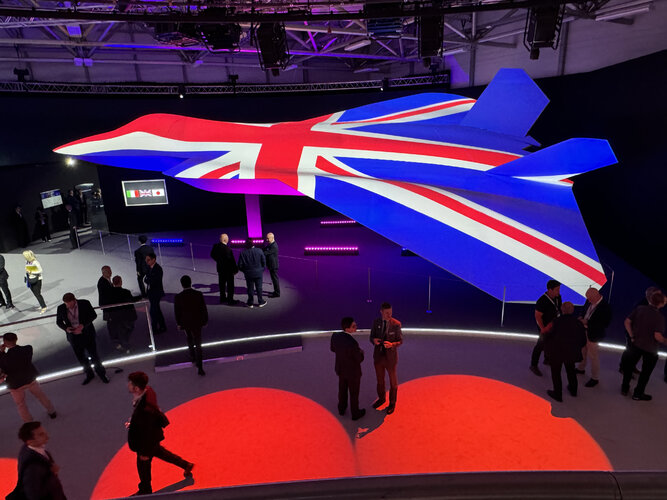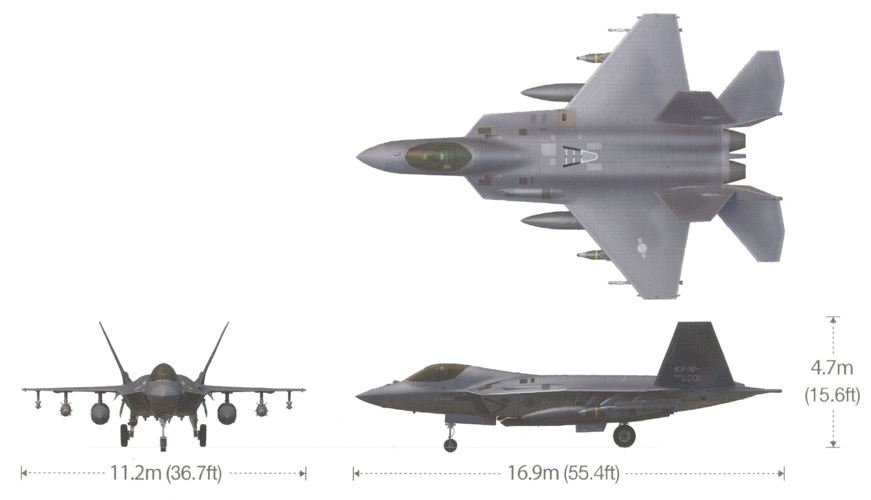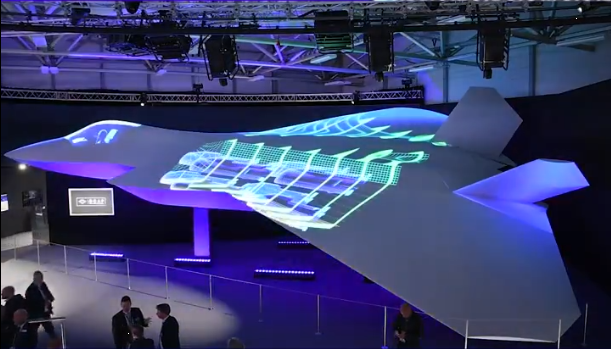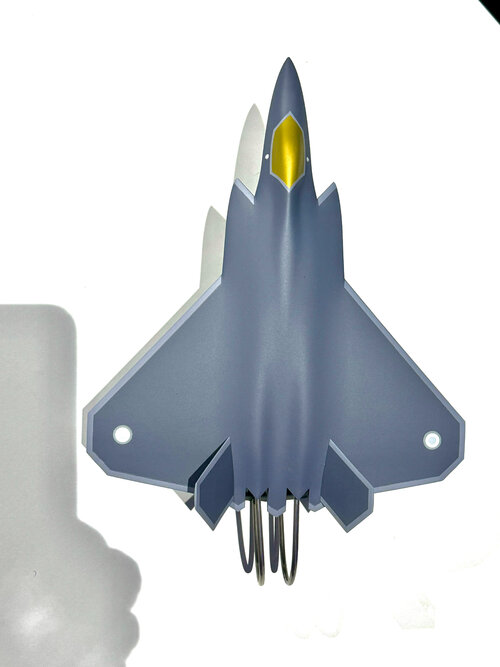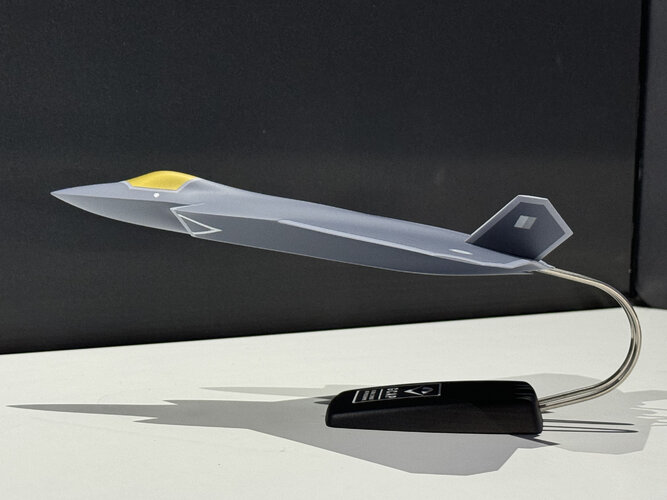You are using an out of date browser. It may not display this or other websites correctly.
You should upgrade or use an alternative browser.
You should upgrade or use an alternative browser.
UK-Japan-Italy Global Combat Air Programme (GCAP) News & Analysis
- Thread starter Deltafan
- Start date
Sorry, what I meant was that Britain, Japan and Italy couldn't make a 6th gen individually. They need this consortium.Well they are....and F-35 cannot deliver what they need....and given the absolute state of the F-35 programme at present might not deliver what has been promised in a reasonable timeframe...would anyone actually be shocked if Block IV still hadn't been delivered in 2035?
My point is that if each nation couldn't realistically deliver a GCAP like aircraft then any money spent is more or less wasted. In that scenario you'd get better bang for your buck with the F-35 even if it can't do everything you want it to do.I disagree with that, the F-35 does not fill the same niche that GCAP does, nor does it bring the same industrial benefits. The F-35 would be inferior in terms of size, weight, range and growth potential. Not investing in GCAP would be more or less a death sentence for the military aviation industries of the member states, in addition to the fact that engineering knowledge can be a massive political and economic bargaining chip.
- Joined
- 25 January 2020
- Messages
- 1,279
- Reaction score
- 1,948
Isn't that the point of having a multinational consortium though? Each nation can leverage its strengths. It's not an issue of technology but of cost, and the last thing the UK, Japan or Italy need right now is losing more technical expertise to the Americans in the current political climate.My point is that if each nation couldn't realistically deliver a GCAP like aircraft then any money spent is more or less wasted.
Sure is. What I was trying to say is that the nations involved would be better off buying more F-35s IF they wasn't a multinational consortium because the GCAP and pretty much all 6th gen, outside of the US and China, are so dependent on partners buying aircraft and contributing to R&D to help keep costs down. Britain, Japan and Italy need each other to pull this off, they can't do it individually.Isn't that the point of having a multinational consortium though? Each nation can leverage its strengths. It's not an issue of technology but of cost, and the last thing the UK, Japan or Italy need right now is losing more technical expertise to the Americans in the current political climate.
That's the great strength of the GCAP. All 3 nations have more or less the same requirements for their next "air dominance" platform, each can offer tech/money, has experience with stealth and most importantly, intends to buy a good number of aircraft.
Here is a bit of scale with a person standing close to the mock up. Absolutely massive and it seems like there will be no issues fitting AShMs internally which Japan initially envisioned. Would be funny if the GCAP partners would buy some AIM-174s and fit those internally too.

View: https://x.com/ItalyMFA_int/status/1815438841395982607
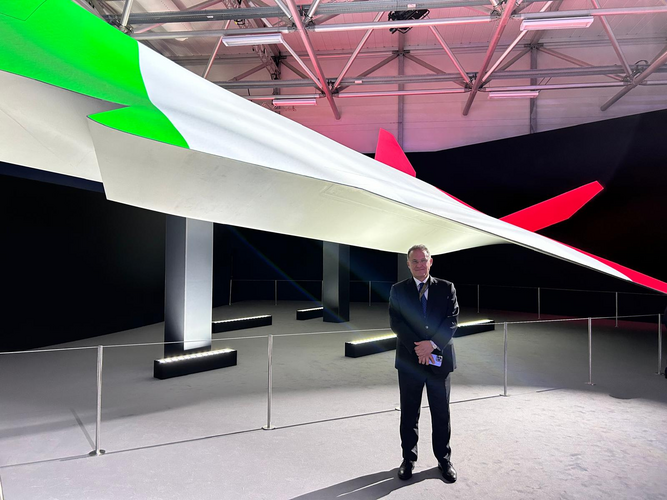
View: https://x.com/ItalyMFA_int/status/1815438841395982607
- Joined
- 23 August 2011
- Messages
- 1,603
- Reaction score
- 4,740
- Joined
- 23 August 2011
- Messages
- 1,603
- Reaction score
- 4,740
Gareth Jennings has some imagery of the demonstrator under construction...
View: https://twitter.com/GarethJennings3/status/1816096415417811441
View: https://twitter.com/GarethJennings3/status/1816096422007128487
View: https://twitter.com/GarethJennings3/status/1816096415417811441
View: https://twitter.com/GarethJennings3/status/1816096422007128487
Jackonicko
ACCESS: Secret
- Joined
- 4 February 2009
- Messages
- 386
- Reaction score
- 903
- Joined
- 24 November 2008
- Messages
- 1,549
- Reaction score
- 2,605
kqcke for you
PUMA PUMA PUMA
- Joined
- 3 November 2022
- Messages
- 1,271
- Reaction score
- 1,673
I guess +100.000 Ib jet here we come.
FCAS should sit at ~85.000 Ib maximum take off weight
FCAS should sit at ~85.000 Ib maximum take off weight
kqcke for you
PUMA PUMA PUMA
- Joined
- 3 November 2022
- Messages
- 1,271
- Reaction score
- 1,673
Yeah should be around the same size.A demonstrator with IWBs and powered by 2x EJ200s would most likely correspond to an aircraft in the size (volume) of KF-21. Wouldn't it?
Forest Green
ACCESS: Above Top Secret
- Joined
- 11 June 2019
- Messages
- 9,416
- Reaction score
- 17,154

Tempest Stealth Fighter Flying Demonstrator Takes Shape
For the first time, we have gotten a look at the Flying Technology Demonstrator that will feed into the Tempest fighter program. For the first time, we have gotten a look at the Flying Technology Demonstrator that will feed into the Tempest fighter program.
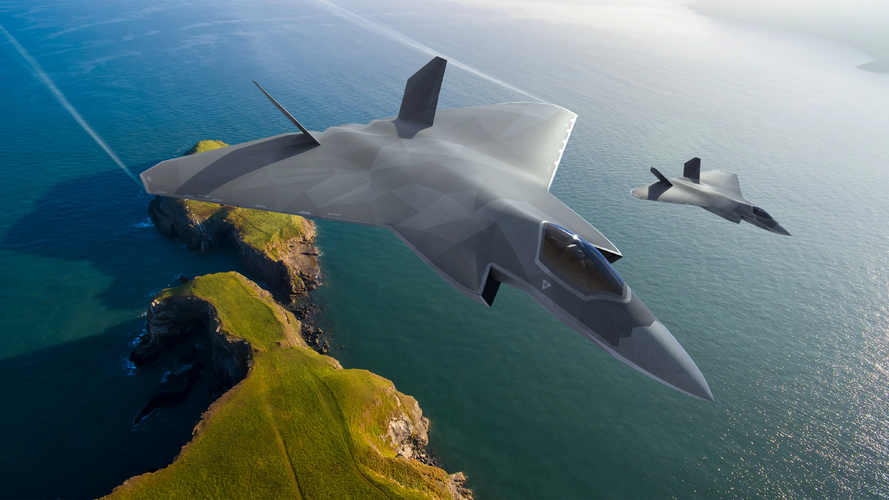
Ares
Man from Far East
- Joined
- 15 October 2018
- Messages
- 99
- Reaction score
- 448
Dunno… could be anything up to a slightly scaled up A-5 Vigilante (2x J79 @ 17,000lbf each, 80,000lb max take off weight) or Mirage IV (2x Atar 9K @15,800lbf, 70,000lb max take off weight.A demonstrator with IWBs and powered by 2x EJ200s would most likely correspond to an aircraft in the size (volume) of KF-21. Wouldn't it?
With 20,000lb EJ200s for the demonstrator and significantly more powerful engines in the production aircraft, why not. That said I don’t see the logic of a 100,000 lb fighter… we’re all speculating.
Forest Green
ACCESS: Above Top Secret
- Joined
- 11 June 2019
- Messages
- 9,416
- Reaction score
- 17,154

Leonardo CEO says sixth-gen fighter is likely safe from budget cuts
“I do not have any indication they want to drop or freeze the program,” said Roberto Cingolani, referring to the Global Combat Air Programme.
- Joined
- 21 January 2015
- Messages
- 12,096
- Reaction score
- 16,232
FARNBOROUGH—UK aerospace engineering company 2Excel has begun adding lumps, bumps and apertures to a Boeing 757 that will help to test the sensor suite and mission systems envisaged for the fighter aircraft set to emerge from the Global Combat Air Program (GCAP).
The 757—known as Excalibur—is currently being modified at 2Excel Engineering’s facility at Lasham, just a few miles from Farnborough, with cheek fairings and a centerline pod to house elements of the Isanke and ICS—for Integrated Sensing and Non-Kinetic Effects and Integrated Communications System—development of which is being led by Leonardo. Isanke and ICS are set to include the advanced Multi-Function Radio Frequency System (MFRS) radar, infrared search-and-track, defensive aids and other electronically scanned arrays.
The 757 will fly again with the modifications later this year, and additional changes will be made to the aircraft in phases, including the addition of the MRFS radar in a new nose fairing.
2Excel Advances 757 Technology Testbed For Tempest, GCAP | Aviation Week Network
Aerospace engineers 2Excel have begun adding lumps and bumps to a Boeing 757 that will help test the future GCAP fighter aircraft's potential sensor suite and mission systems.
kqcke for you
PUMA PUMA PUMA
- Joined
- 3 November 2022
- Messages
- 1,271
- Reaction score
- 1,673
How likely is it that this is the final design? I find it curious that the loyal wingman will have canards (which will lead to bigger RCS) but the mothership won't, considering the drone will probably fly ahead of the manned fighter.
The design also looks like was made very large to have a huge range to contend with the J-20 in the Pacific. Something that is almost certainly a requirement for the Japanese, but I'm fairly certain Italy and the UK (and most export prospects) could do without. I sense a major compromise happened.
The design also looks like was made very large to have a huge range to contend with the J-20 in the Pacific. Something that is almost certainly a requirement for the Japanese, but I'm fairly certain Italy and the UK (and most export prospects) could do without. I sense a major compromise happened.
Jackonicko
ACCESS: Secret
- Joined
- 4 February 2009
- Messages
- 386
- Reaction score
- 903
The UK Adjunct (we no longer use the term Loyal Wingman) won't have canards - it's more likely to be something like the BAE ACP design.How likely is it that this is the final design? I find it curious that the loyal wingman will have canards (which will lead to bigger RCS) but the mothership won't, considering the drone will probably fly ahead of the manned fighter.
The design also looks like was made very large to have a huge range to contend with the J-20 in the Pacific. Something that is almost certainly a requirement for the Japanese, but I'm fairly certain Italy and the UK (and most export prospects) could do without. I sense a major compromise happened.
The aircraft needs to be big to carry enough fuel and weapons for the Northern QRA type of mission. It's bound to be bigger than an F-35 or a Typhoon.
- Joined
- 23 August 2011
- Messages
- 1,603
- Reaction score
- 4,740
People keep mentioning 'the Pacific' as if the JASDF is facing the same distance issues as the USAF...they're not.The design also looks like was made very large to have a huge range to contend with the J-20 in the Pacific. Something that is almost certainly a requirement for the Japanese, but I'm fairly certain Italy and the UK (and most export prospects) could do without.
You really need to check what ranges the UK requires...Have a look at a globe or Google Earth and chart out actual distances....
I'll give you a clue....Kagoshima to Iwo Jima, Iwo Jima to Guam, Kagoshima to southern Senkaku's is roughly the same distance as Lossiemouth to coast of Iceland...or from Lossie into the southern reaches of the Norwegian Sea.
Look at the Japanese doing a combat air patrol from Kenebetsu or Naha...and then compare it to what the UK needs to do from Lossiemouth...
Look at Lossie to Bodo, or into Norwegian Sea...thats where the threat comes from...
Tornado F.3 was designed to push far past the Faroes and then loiter for a couple of hours waiting for trade...the threat, such as it is, is even further away today...
Look at the actual combat missions worldwide the UK has had to do using Tornado and Typhoon....they need range.
Same with the Italian's...the potential threat isn't from France or Slovenia...
Jackonicko
ACCESS: Secret
- Joined
- 4 February 2009
- Messages
- 386
- Reaction score
- 903

Manufacturing underway on UK’s first indigenous fighter design for 40 years
Britain's new combat air demonstrator has now entered the assembly phase.
Jackonicko
ACCESS: Secret
- Joined
- 4 February 2009
- Messages
- 386
- Reaction score
- 903

Leonardo details sensor integration on Tempest
Leonardo has revealed exactly which sensors are being integrated within the Tempest innovative ISANKE system.
snne
ACCESS: Top Secret
- Joined
- 3 July 2022
- Messages
- 1,385
- Reaction score
- 4,489
Though I can't see a reason why Italy would need an F-111 size fighter, unless they too plan to gang up on China. F-35 is not that short legged either; and in this sense it fits their current and future needs just fine (at least in my own opinion). Their Naval Aviation is already capable enough and their F-35s provide commonality with the Air Force.That's the great strength of the GCAP. All 3 nations have more or less the same requirements for their next "air dominance" platform, each can offer tech/money, has experience with stealth and most importantly, intends to buy a good number of aircraft.
Jackonicko
ACCESS: Secret
- Joined
- 4 February 2009
- Messages
- 386
- Reaction score
- 903
The F-35 was designed for the epoch we are just leaving, whereas GCAP is designed for the next one. F-35 will still be useful - but augmenting a sixth gen platform like Tempest - in just the same way that Typhoon augments F-35 today. It will not be adequate, on its own, in the future battlespace,Though I can't see a reason why Italy would need an F-111 size fighter, unless they too plan to gang up on China. F-35 is not that short legged either; and in this sense it fits their current and future needs just fine (at least in my own opinion). Their Naval Aviation is already capable enough and their F-35s provide commonality with the Air Force.
Japan is the one pushing for a larger more capable fighter. Their requirements are certainly more ambitious than both the UK and Italy but there isn't any real massive disagreements as far as I can tell. I think one of the big driving forces that have tied all the GCAP partners together is the timeframe and the fact that there just isn't any other big 6th gen project that isn't off limits (China's 6th gen, NGAD, Russia hail Mary) or doesn't have it's own frankly bigger problems like France, Germany and Spain's FCAS.Though I can't see a reason why Italy would need an F-111 size fighter, unless they too plan to gang up on China. F-35 is not that short legged either; and in this sense it fits their current and future needs just fine (at least in my own opinion). Their Naval Aviation is already capable enough and their F-35s provide commonality with the Air Force.
Simply put, if Italy wants a 6th gen on this timeline then just don't have anywhere else to go. They might end up with something larger, more capable and more expensive than they need but it's either that or nothing.
- Joined
- 25 January 2020
- Messages
- 1,279
- Reaction score
- 1,948
Italy has a lot of coastline to cover too, and it could also allow them to launch missions over Eastern Europe from home bases, without needing excessive tanker support. This could allow them to harden their air defences around bases more, like what the Norwegians did.Though I can't see a reason why Italy would need an F-111 size fighter, unless they too plan to gang up on China. F-35 is not that short legged either; and in this sense it fits their current and future needs just fine (at least in my own opinion). Their Naval Aviation is already capable enough and their F-35s provide commonality with the Air Force.
WatcherZero
ACCESS: Top Secret
- Joined
- 22 May 2023
- Messages
- 824
- Reaction score
- 1,917
Italy considers northern Africa within its military sphere of influence much like the French were trying to maintain in central Africa, to a lesser extent they also consider the Caucasus to be as well from Syria to the Stans as these areas have a large impact on the Med in migrants, organised crime and smuggling.
Ainen
I really should change my personal text
- Joined
- 25 August 2011
- Messages
- 1,237
- Reaction score
- 1,649
Why is that mission even relevant thou?UK has a lot of North Sea and Atlantic to cover.
Tornado ADV had to tote some seriously large drop tanks for the BARCAP mission over the GIUK Gap.
There is literally no threat. Soviet Naval aviation (more than twice as large as the entirety of VKS; northern fleet alone, without baltic, boasted like 5 time long range maritime strike capability than whole modern VKS, and had several times more LR ASW/REC regiments than modern Russian navair has modern asw planes) is kinda gone.
Last edited:
WatcherZero
ACCESS: Top Secret
- Joined
- 22 May 2023
- Messages
- 824
- Reaction score
- 1,917
Still regularly aircraft testing UK and Nordic states QRA though which currently requires tanker support to intercept them.
- Joined
- 23 August 2011
- Messages
- 1,603
- Reaction score
- 4,740
Why is that mission even relevant thou?
It's where any cruise missiles or drones would come from...
And GCAP is for 2035 onwards...not today...
Ainen
I really should change my personal text
- Joined
- 25 August 2011
- Messages
- 1,237
- Reaction score
- 1,649
Cruise missiles fly somewhere, i.e. they have an end point; it isn't justification for range for a relatively small nation. And Russian cruise missiles are already so long ranged that interception of archers will not be feasible, regardless of how much will be invested into fighter range.It's where any cruise missiles or drones would come from...
And GCAP is for 2035 onwards...not today...
+I would be quite surprised if in 2035 Northern Fleet aviation (or, for that matter, Northern Fleet itself) will somehow start to matter again. 2035 is just ten years away, predicting orbats of technically-intensive military branches for this timeframe for Russia is quite doable.
For China maybe not, they have the industrial capacity to overturn the picture in this timespan if they want to(and, in fact, just did).
Old US and SU could, too, as all the old European powers could before WW2.
Modern Russia certainly can't.
Overall, IMHO it appears to me, that there is a distinctive connection between fighter size and actual(not "announced") air challenge felt by the nation. The larger the threat - the smaller the fighter.
Maybe I am starting to fall into fighter mafia heresy. Who knows?
- Joined
- 15 July 2007
- Messages
- 4,876
- Reaction score
- 4,527
Well we're certainly not having to think about fighting nearby over Belgium, Northern France and the Netherlands.Why is that mission even relevant thou?
There is literally no threat. Soviet Naval aviation (more than twice as large as the entirety of VKS; northern fleet alone, without baltic, boasted like 5 time long range maritime strike capability than whole modern VKS, and had several times more LR ASW/REC regiments than modern Russian navair has modern asw planes) is kinda gone.
So great range is required and a over reliance of tanker support is inherently limiting. Something we have decades of experience with.
We be far more likely to be rushing out to Eastern Europe, the Baltic or the Mediterranean. Or in Northern Norway, Finland and Sweden.
- Joined
- 23 August 2011
- Messages
- 1,603
- Reaction score
- 4,740
And the best form of defence, and the UK's usual method, is to fight any battles on an enemies territory...Well we're certainly not having to think about fighting nearby over Belgium, Northern France and the Netherlands.
So great range is required and a over reliance of tanker support is inherently limiting. Something we have decades of experience with.
We be far more likely to be rushing out to Eastern Europe, the Baltic or the Mediterranean. Or in Northern Norway, Finland and Sweden.
- Joined
- 15 July 2007
- Messages
- 4,876
- Reaction score
- 4,527
Better Drake at Cadiz, than Harold at Hastings.And the best form of defence, and the UK's usual method, is to fight any battles on an enemies territory...
Are they not? The only exception is Guam, but there are more US personnel in both Korea and Japan individually and now work is starting on a base in the Philippines. Besides bomber wings, the US has a bigger presence in Japan than Guam.People keep mentioning 'the Pacific' as if the JASDF is facing the same distance issues as the USAF...they're not.
No idea why you are using Kagoshima as a baseline when there is no JASDF base there. You're also making false equivalencies. Neither Iceland or the Norwegian Sea are UK territories while the Kyukyu arc is part of Japan are part of the JADIZ. From Nyutabaru to the edge of Japan's ADIZ is around 1,300km while it's around 640km from Lossiemouth to the edge above their ADIZ above the Faroes. All your examples of missions that the RAF would do are absolute maximum distances well outside of their ADIZ and comparing them to Japan just operating in their ADIZ.I'll give you a clue....Kagoshima to Iwo Jima, Iwo Jima to Guam, Kagoshima to southern Senkaku's is roughly the same distance as Lossiemouth to coast of Iceland...or from Lossie into the southern reaches of the Norwegian Sea.
There is also the variance that needs to be considered. The difference between Lossiemouth, Coningsby, and Odiham to both Kaliningrad and St Petersburg are all <100km variance. The difference between Nyutabaru and Chitose to the Taiwan straight is 1,400km. Japan's ADIZ is 3300km end to end while the UK's is half that. That's why there is so much emphasis put on the Pacific.
Your average RAF scramble looks like this simply touching the edge of their ADIZ at <1000km distances, but you are trying to create this picture of the RAF regularly flying over Iceland and deep into the Norwegian Sea well outside the ADIZ just to try and create an equivalence to actual scramble missions Japan does fly in it's ADIZ.
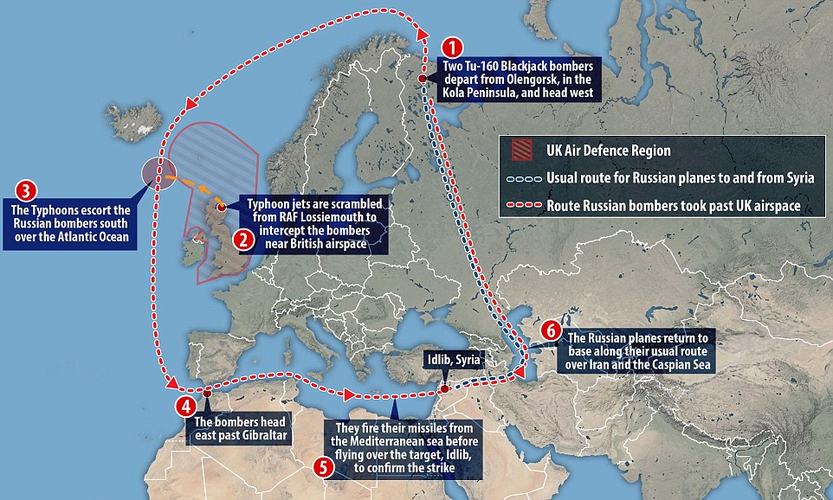
Jackonicko
ACCESS: Secret
- Joined
- 4 February 2009
- Messages
- 386
- Reaction score
- 903
- Joined
- 23 August 2011
- Messages
- 1,603
- Reaction score
- 4,740
Your average RAF scramble looks like this simply touching the edge of their ADIZ at <1000km distances, but you are trying to create this picture of the RAF regularly flying over Iceland and deep into the Norwegian Sea well outside the ADIZ just to try and create an equivalence to actual scramble missions Japan does fly in it's ADIZ.
The rather obvious retort is that an ADIZ does not reflect what we would want to do in a shooting war...
- Joined
- 6 September 2006
- Messages
- 4,829
- Reaction score
- 9,422
Range is always vital, Typhoons relied on tanker support when operating from Cyprus to strike targets in Iraq. Tankers are relatively rare assets, if you don't need to rely on them it frees them for other aircraft to use.
I'm seeing the GCAP becoming a proper Tornado replacement (with perhaps longer legs).
I'm seeing the GCAP becoming a proper Tornado replacement (with perhaps longer legs).
Similar threads
-
-
-
MBDA Future Cruise / Anti-Ship Weapon (FC / ASW)
- Started by Triton
- Replies: 175
-
-
Royal Navy submarine special forces delivery systems
- Started by Pirate Pete
- Replies: 3

